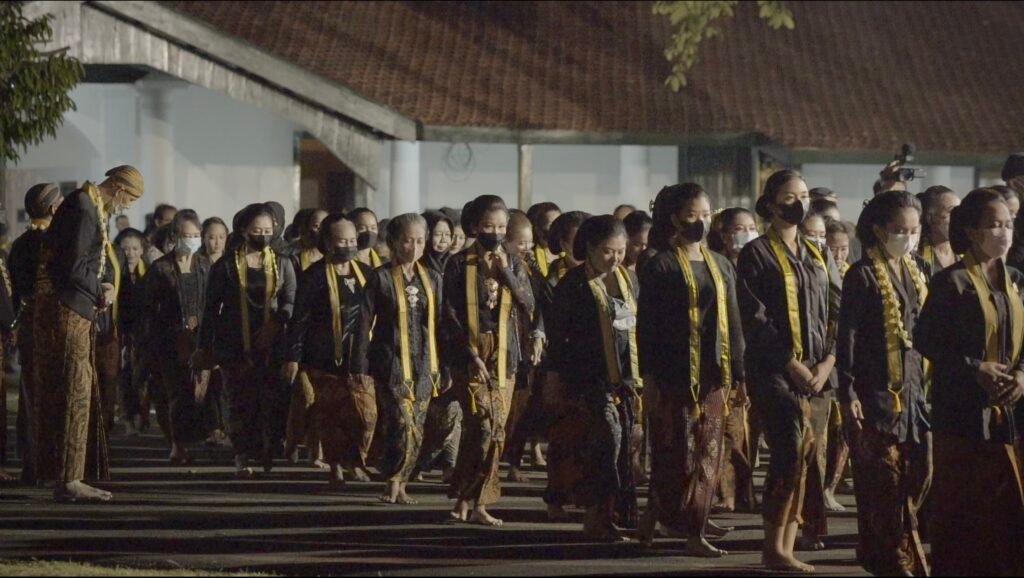Uncategorized
Reflection for a New Beginning
Known as a haunted and mystical month for most Javanese people, Suro is believed to be the month for Bongso Alus (ghost spirit). As a result, Java is prone to a number of superstitions that must be avoided to prevent catastrophe. Despite its mystical significance, Suro is actually a month that is rich in philosophy.
Satu Suro is a Javanese new year celebration, which marks the beginning of Suro as the first month in the Javanese calendar. The word Suro is derived from the Arabic word ‘asyura’ which means tenth. In contrast to the Gregorian calendar, the Javanese calendar changes the year at sunset, not at midnight. Due to a period of adjustment between the Hijri and Javanese calendar systems, the Javanese new year is observed at the same time as the Islamic new year.
Since the beginning of time, Javanese already had their own belief system. This method was put into practice in daily life until it became the Javanese people’s identity and core value. When new cultures arrive, Javanese people always choose who gets to enter because they are very protective of their identity. There was no such thing as Hinduization, Buddhaization, Islamization, or Christianization when the five major religions first arrived in Java. These faiths were only Javanized. A cultural approach is the most efficient strategy in order to transmit the foreign cultures that have influenced Java.
Javanese people used the Saka calendar system prior to the arrival of Islam because of the influence of the Hindu-Buddhist empire. Then, in the 17th century, Sultan Agung, the ruler of the kingdom of Mataram, wished to replace the sun-based Saka calendar with a system based on moon rotation and the Hijri calendar. The intention is to unite the abangan (local believers) and the putihan (Islamic teachings). However, the numerals on the Saka calendar will continue to be used. As the result, Javanese calendar is quite unique because it is a merger of Saka (Hindu), Hijri (Islam), and Julian (western) calendar system.

The Javanese have a distinctive method of preparing for the upcoming year. This is done with introspection as an effort to introspect on the things that were done in the previous year so that they can prepare for the coming year. The month of Suro is regarded as a reminder to remain mindful and aware. Mindful as Javanese say, eling entails remembering who we are and our role as God’s creations. Where being aware is interpreted as maintaining an attitude of vigilance against deceptive things.
The activity carried out by the Javanese people in welcoming the Javanese new year is by engaging in the tradition of tirakatan, which is staying awake all night. Some individuals practice tirakatan in sacred places such as mountains, beaches, and sacred tombs. Tirakat is interpreted as an act of concern to strengthen faith as well as overcome the difficulties of life. On the night of Satu Suro, there are other taboos that must be avoided, such as being prohibited from leaving the house, hosting parties, using foul language, and constructing or moving out. Those who violate it are believed to have bad luck.
As part of the Mataram Sultanate, Yogyakarta and Surakarta have special ceremonies to welcome the Javanese new year. In Yogyakarta, there is a Mubeng Beteng ritual in which abdi dalem (courtiers) of the palace surround the palace fort barefoot and are forbidden to speak. This ritual is also known as Tapa Bisu (talking fast). The goal is to bring humans closer to God by controlling all forms of worldly desires. This ritual is also a symbol of serenity and self-reflection.
The Mubeng Beteng ritual is performed at midnight and begins when Kyai Brajanala’s bell in the Regol Keben is rung 12 times, followed by the Macapat song from the Srimanganti Ward. The ritual will start from the left or west side of the palace. The principle of escort from the left side is ngiwake, which means toss out the negative things.
In addition to Mubeng Beteng, the people of Yogyakarta who live on the south coast will perform the Jamasan Pusaka ritual, namely washing heirlooms such as keris on Parangtritis Beach. There is also the Larung Sesaji ritual to throw offerings into the sea.
It is different from Solo, which has the Grebek Suro ritual. The people of Solo will conduct a carnival with seven Kebo Bule (white buffalo) and 13 royal heirlooms. The heirlooms that were celebrated included Kanjeng Kyai Baru, Kebo Mas, Brekat, Shell, Kertaraharja, and Kanjeng Kyai Jompong.
At precisely midnight, Kirab pusaka (royal heirlooms carnival) departs from the palace. The route surrounds several protocol roads in the city of Solo accompanied by courtiers and palace soldiers. In this ritual, the role of a herd of Kebo Bule is to act as a cucuk lampah or to open the way for a carnival parade. All participants are forbidden from speaking, eating, drinking, and smoking while the procession is in progress. The purpose of this carnival is to repel reinforcements so that the palace and its people are far from misfortune and are always given safety.
New year is not always celebrated with festive parties and fireworks. Javanese society has a unique way, namely by self-reflection. By engaging in self-reflection, we will be reminded of our purpose in life and reflect on all the things that have been passed in the past. That way you will be better prepared to face a new life in the coming year.


